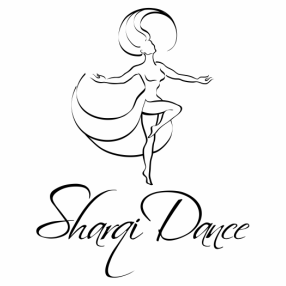|
Learn About This Crucial Type of Belly Dance Music Megeance (alternatively spelled mejance, majency, mejanse, meganse, mejanci, meyancé, madjensie) is a style of music that is used for a belly dancer's entrance. This raqs sharqi (belly dance) opening number typically begins with a fast rhythm that allows for the dancer to cover space as she "greets" her audience and captures their attention, then changes in rhythm and melody so that the dancer can take her* audience on a sort of journey through a variety of Middle Eastern dance styles. This is where the dancer can showcase her range. The megeance will often include sections of Middle Eastern music such as baladi, saidi, khaleegy, and others. Sometimes, the megeance will even include taqasim or a mini darbuka solo within itself. In a sense, the megeance can be a considered a mini belly dance set, because its varied sections are composed of the same elements that are typically included in a full belly dance show: a fast and powerful entrance, folkloric and/or miscellaneous Middle Eastern dances, a possible taqsim and/or drum solo, and an exit that "book ends" the same themes of the entrance. In the megeance those elements are compressed into a "mini-show," which can be performed on its own (for example in a belly dance event, competition or hafla), or in the beginning of a full belly dance set (as in a restaurant show, wedding or party). Watch Shahrzad Dance to Her Megeance In Egypt, where famous dancers often put together their own orchestra of musicians, a dancer's megeance is typically composed specifically for her. This is the case for the megeance above, Bahlem Bi Shahrzad, which was created by and composed for Shahrzad herself!
Here in the west, where belly dancers don't generally have access to a live orchestra of their own, it is more common for belly dancers to use music that was composed to be a "general" megeance, or use megeance songs that were composed for another famous dancer. Whether dancing to a live orchestra or recorded music, at a belly dance hafla or a wedding, every well-rounded belly dance student and professional belly dancer should understand the dynamics and purpose of the megeance, and do her best to do it justice! *In this post, I used the pronoun "she" to refer to belly dancers. However, it is important to note that this art form is inclusive of men as well as agender, bi-gender, gender-fluid and otherwise gender non-conforming folks. I choose feminine pronouns when writing about belly dance for simplicity, but I welcome you to pick your own preferred pronoun when you read through this and my other posts. Was this post helpful? Would you like to learn more about belly dance? Hit "like" below, share, and leave a comment with your feedback! You can also visit our blog map to find more posts like this, or subscribe to our newsletter, YouTube channel, or Facebook page to be the first to find out about our next post. Happy learning, and happy dancing!
2 Comments
Celia
8/12/2020 07:03:18 am
Thank you for the concise explanation to reinforce the in-class overview; and I really appreciate the inclusive note re pronouns & identity
Reply
8/12/2020 12:11:38 pm
Thank you for your comment! I tend to refer to belly dancers as women and "she" just out of convenience because women do represent the majority of practitioners, but it's important for me to make sure I am not excluding men and other gender identities. Everyone is welcome and everyone can benefit from this dance <3
Reply
Leave a Reply. |
AuthorYamê is a Brazilian-American View Posts By CategoryIf you'd like to read more articles by Yamê or SharqiDance's guest authors, please view our blog map here.
Archives
January 2024
|


 RSS Feed
RSS Feed